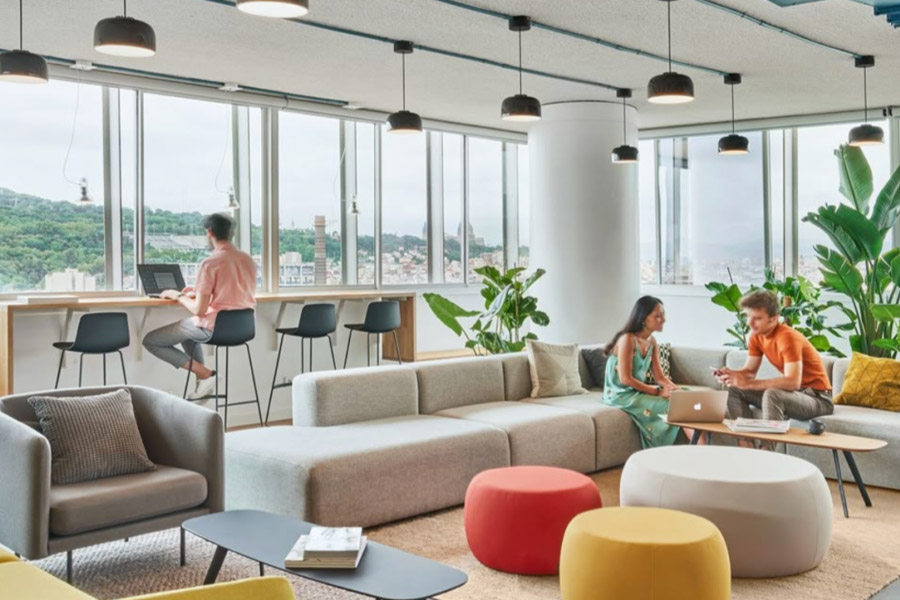Now Reading: How Coworking Spaces Are Reshaping Urban Professional Life
-
01
How Coworking Spaces Are Reshaping Urban Professional Life
How Coworking Spaces Are Reshaping Urban Professional Life

Why coworking is transforming the urban work environment
The hum of an espresso machine, sunlight splitting through industrial windows, and a patchwork of focused faces — that’s modern coworking. It’s not just a row of shared desks; it’s a response to cities that never stop moving. Long-term leases and static cubicles belonged to another era. Today’s urban professionals want options: places that flex with project timelines, lifestyle shifts, and unpredictable schedules.
Coworking obliterates the binary of “office or home.” Monthly memberships, day passes, and 24/7 entry let people design work around life instead of the other way around. That autonomy matters when commutes, childcare, side hustles, and creative bursts all compete for the same hours. In the end, coworking aligns with the fast, improvisational rhythm of city living.
Flexibility that matches the urban pulse
Flexibility here is literal and atmospheric. Spaces offer quiet booths for concentrated deep work and open lounges for brainstorming; you can move from focus to collaboration without packing up. For freelancers and startups, that flexible footprint is financial oxygen — no multi-year leases, no empty office during slow months.
Beyond cost, the flexibility is temporal: late-night access for a designer on deadline, a weekend meeting for a nonprofit launching a campaign, or a phone booth for an urgent client call. Coworking adapts to the ebb and flow of urban schedules, and that adaptability is making it indispensable for many who refuse to be boxed into nine-to-five.
Building urban communities through work
The magic of coworking isn’t just architecture; it’s serendipity. When a product manager grabs coffee at the same barista as a landscape architect, a casual exchange can become the seed of a project. These moments — the chats between strangers that grow into collaborations — are what coworking intentionally cultivates.
Events, workshops, and impromptu lunchtime conversations create social glue. Coworking environments replace transactional interactions with human ones, rebuilding a social fabric that remote work often frays. People come for the desks but stay for the conversations, mentorships, and the subtle boost of belonging that comes from shared space.
Supporting diverse professional paths
Cities are a mosaic of careers — consultants, artists, tech teams, legal clinics, and side-preneurs. Coworking spaces are designed to serve that variety rather than force everyone into the same mold. Privacy booths coexist with communal tables; podcast studios sit alongside event spaces; meeting rooms can host a corporate pitch or an indie book reading.
Amenities reflect an understanding of modern life: childcare options, wellness rooms, rooftop lounges, and on-site fitness. These perks acknowledge that professionals aren’t just workers; they’re parents, artists, caretakers, and lifelong learners. The variety of resources makes coworking uniquely suited to portfolio careers and hybrid lifestyles, where someone might be a consultant by day and a musician by night.
Catalyzing innovation through environment
Design in coworking spaces isn’t accidental. Natural light, artful touches, and flexible furniture nudge people out of stale thinking patterns. When you share a room with people building different things, ideas collide — product features meet poetic phrasing, and technical know-how meets creative intuition.
Movement matters too: spaces that encourage walking conversations, quick stand-ups, or spontaneous meetups keep mental energy high. These physical cues — small, intentional design choices — change how teams approach problems. Coworking becomes more than real estate; it becomes a short-circuit for creativity.
Rethinking work-life integration in the city
Forget the old “work-life balance” myth where life neatly splits into two columns. Urban life is messy and overlapping, and coworking spaces embrace that complexity. With cafes, wellness zones, and daycare nearby, the workplace becomes a multifunctional node rather than a compartment.
For those in tiny apartments, coworking provides a professional backdrop and a psychological boundary between personal and professional life. That separation helps focus, reduces friction, and even improves mental health. And because the space supports both productivity and pause, people can structure their day with more humane rhythms — a midday yoga session, an after-hours networking event, or a quiet stretch for concentrated writing.
The economics and the emotional return
On paper, coworking can cut costs and reduce risk: shorter commitments, shared utilities, and scalable options for teams that are growing or contracting. But there’s also an emotional ROI that shows up in quieter ways. People report feeling less isolated, more motivated, and oddly more hopeful when they’re around others who are building and experimenting.
This mix of practical savings and intangible uplift is what makes coworking compelling to individuals and companies alike. It offers a pragmatic toolkit for managing expenses while gifting something harder to quantify — momentum.
FAQ
What types of memberships do coworking spaces usually offer?
Most spaces provide flexible options like daily passes, monthly hot-desks, dedicated desks, and private offices to match different needs and budgets.
Are coworking spaces good for established companies?
Yes — many companies use coworking for satellite teams, temporary projects, or to offer hybrid employees local work hubs without committing to long leases.
Do coworking spaces help with networking?
Absolutely; informal interactions, events, and shared amenities create natural opportunities for networking and collaboration.
Can coworking improve productivity compared to working from home?
Many people find coworking improves focus due to clearer boundaries, fewer domestic distractions, and an environment built for work.
Are amenities like childcare and gyms common?
Some modern coworking spaces offer these amenities, though availability varies by location and membership tier.
Is coworking expensive in major cities?
Costs vary widely; while coworking can be cheaper than a private office, premium locations and amenities can raise prices, so options exist for different budgets.




















